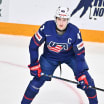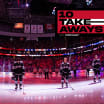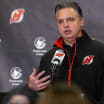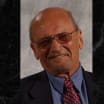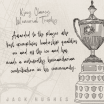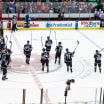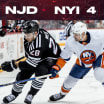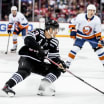Long, long before the Devils played their first game at Brendan Byrne Arena in The Meadowlands, the seeds of high-grade hockey had been planted in The Garden State.
A primitive version of hockey was played by Native Americans using tree branches for sticks and makeshift "skates" that never could be authorized by the National Hockey League.
A more modern model of the ice game achieved popularity late in the 19th century thanks to the invention of a refrigeration plant. That guaranteed artificial ice in covered rinks enabled universities such as Princeton to deliver a high-quality team.
DEVILS OVER THE DECADES: Ch. 1 - The Birth of Hockey in Jersey
Stan Fischler writes about the start of hockey in New Jersey in Chapter 1 of Devils Over the Decades
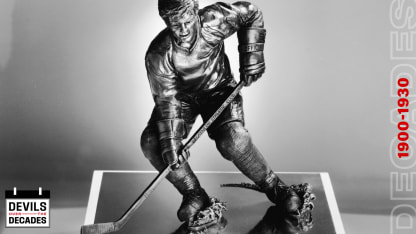
By
Stan Fischler
Special to NHL.com
PREVIOUS ARTICLES
PAST CHAPTERS
Ch. 1 - The Birth of Hockey in Jersey
Ch. 2 - How it all Began
Ch. 3 - The First Devils Roster
Ch. 4 - The Milestone First Season
Ch. 5 - The Great Gretzky Uproar
Ch. 6 - Getting Even with Gretzky
Ch. 7 - A New Coach, A New Era
Ch. 8 - The Birth of a Rivalry
Ch. 9 - A Showdown Season
Ch. 10 - Carpenter's Last Stand
Ch. 11 - Enter Lou, Enter Changes
Ch. 12 - Exit Carpenter, Enter Schoenfeld
Ch. 13 - Devils Over the Decades
Ch. 14 - The Hot Homestretch
Ch. 15 - Showdown with the Rangers
Ch. 16 - A Classic Win
Ch. 17 - Playoff Bound - Almost!
Ch. 18 - First Playoff Berth
Ch. 19 - First Playoff Win
Ch. 20 - Washing the Capitals
Ch. 21 - Meadowlands Melodrama
Ch. 22 - Goodbye Caps, Hello Boston
Ch. 23 - Taking on the Bruins
Ch. 24 - Yellow Sunday in East Rutherford
Ch. 25 - Close but no Cigar
Ch. 26 - Best Devils Quotations
Ch. 27 - Build-Up to a Letdown
Ch. 28 - The Russian Invasion of New Jersey
Ch. 29 - Slava and Sergei Arrive
Ch. 30 - Evolution of the Russians
Ch. 31 - 1990s Playoffs or Bust
Ch. 32 - Adding Muscle on top of Muscle
Ch. 33 - Coaching Change; Cunnif to McVie
Ch. 34 - McVie for Victory
Ch. 35 - Bring on the Penguins
Ch. 36 - Chasing the Elusive Penguins
Ch. 37 - Building a Champion - Get Stevens!
Ch. 38 - Explosive Devils of 1991-92
Ch. 39 - Breezing Along with the Breeze
STANLEY CUP WINS
2003 - Devils Stanley Cup Run
2000 - Lucky Seven
2000 - Winning in Dallas
1995 - Built off a Lockout, Cup Champs
SPECIAL EDITIONS
Devils Cavalcade of Coaches
Coaches Sidebar
Best Devils Quotations
WHAT'S NEXT
A new Devils Over the Decades article will be published every Tuesday, Friday and Sunday morning. Check NewJerseyDevils.com to continue reading!
In 1900 Princeton -- along with Columbia, Dartmouth, Harvard, and Yale -- became a member of the Intercollegiate Hockey League. The Tigers captured their first championship in 1907 but the best was yet to come.
When Hobart (Hobey) Baker gained a spot on Princeton's roster in 1910, the university's sextet became the scourge of the East. The gifted and creative Baker was considered the first outstanding player developed in the United States.
After Hobey led the Tigers to titles in 1912 and 1913, The Boston Heraldnoted: "Baker is without a doubt the greatest amateur hockey player ever developed in this country or Canada."
What lifted Baker to a niche higher than any other stickhandler of that era was his multiplicity of talents. His speed was unmatched by any competitor and his "hockey sense" had that special Wayne Gretzky quality of knowing where the puck would be before anyone else.
Boston Herald:"No player has been able to weave in or out of a defense and change his pace and direction with the uncanny generalship of Baker. He is the wonder player of hockey. And above all, he is extremely clean in his work on the ice -- he believes that rough stuff has no place in the game."
Hobey brought more honors to New Jersey hockey than any player in his era. After graduation, he filled Manhattan's St. Nicholas Arena as a member of the famed St.Nicholas Hockey Club, skating against the best teams invading from Canada.
Baker became an aviator in World War I, winning a French Croix de Guerrefor exceptional valor under fire. Just a month after hostilities ceased in November 1918 Hobey took a plane up for a spin but died in an ensuing crash.
Princeton memorialized its hero with the construction of the Hobey Baker Rink when the Tigers began practicing in 1922. Although Princeton produced powerful teams in the late 1920s its next championship club didn't win a pennant until 1941 when the Tigers topped the Quadrangle League.
Arena-wise, the biggest breakthrough in the state took place in 1929 when the Atlantic City Convention Hall opened adjacent to the city's Boardwalk. In the early 1930s the Atlantic City Sea Gulls became a member of the Eastern Amateur Hockey League, (EAHL), a feeder circuit to the NHL.
A benefit game during The Great Depression drew a crowd of more than 20,000 to see the NHL Rangers play the Sea Gulls. Later in the 1930s promoter John Handwerg built an arena in suburban River Vale, New Jersey.
Nicknamed the River Vale Skeeters, the club featured Roy (Red) Storey, who later would make headlines as an NHL referee. The River Vale Arena also was the site of Hall of Fame referee Bill (The Big Whistle) Chadwick's first game as an on-ice official.
Following World War II new rinks emerged in various parts of New Jersey including the city of West New York. Its arena featured bizarre (128 by 108 feet) dimensions that once moved beer league player Ira Gitler to remark that "If you're playing hockey in West New York, it was best to be a forward!"
Minor pro hockey eventually bloomed in Cherry Hill and Haddonfield while the rink at Brick Township was where Devils' 1995 Stanley Cup hero Jim Dowd learned to stickhandle.
A poor man's version of the big-league game was seen at Cherry Hill Arena in 1974 when the New York Golden Blades of the World Hockey Association went belly up at its original Madison Square Garden home and relocated under the sobriquetNew Jersey Knights.
Cherry Hill's rink was notorious for the unevenness of its ice surface which rose to a hill at its center and then tapered off at each side.
"It was," said Hall of Famer Bobby Hull who then skated for the WHA's Winnipeg Jets, "one of the most bizarre rinks I ever had the displeasure of skating on; and I've been on some lulus."
Not long after the WHA evaporated -- sending four teams to the NHL -- ice roots sprouted in a former marsh called The Meadowlands. A goliath rink would grow and be dubbed the Byrne Meadowlands Arena.
In time the result would be The Garden State's first major professional team. The National Hockey League would deliver a hearty welcome to the New Jersey Devils!

